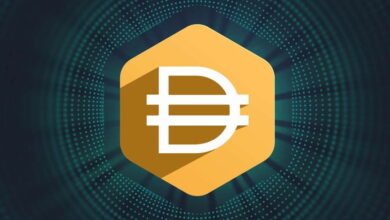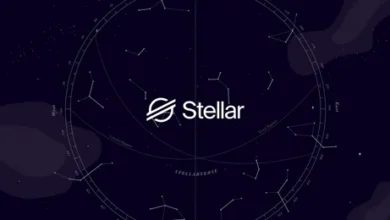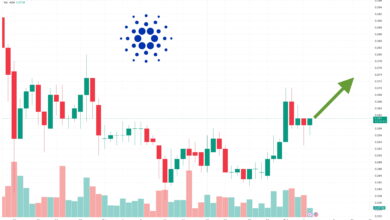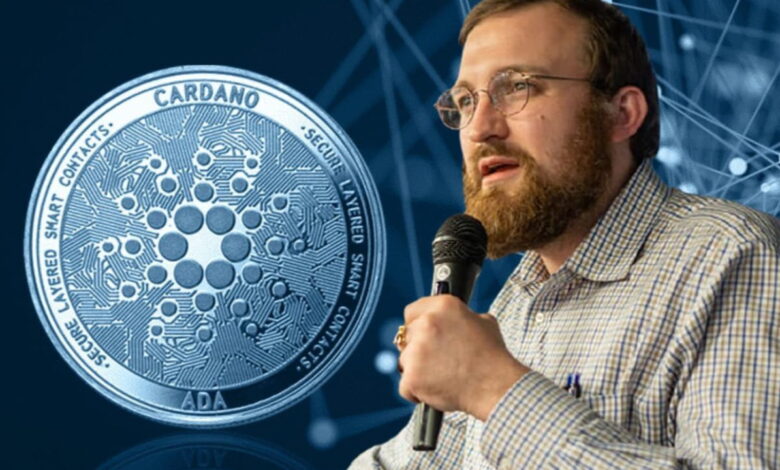
Cardano Founder ADA Will Break the Internet Soon
The Cardano community woke up to a bold claim: Charles Hoskinson, the Cardano founder, says ADA is poised to “break the internet.” The remark, dropped on X in mid-September, has ricocheted across crypto Twitter and trading desks alike, stoking speculation about what upgrade, partnership, or ecosystem milestone could trigger such a seismic moment.
Multiple crypto outlets picked up the post and the market chatter that followed, noting the timing amid renewed risk appetite and ETF narratives. While Hoskinson didn’t reveal specifics, the comment alone catalyzed debate about Cardano’s 2025 roadmap, including decentralized governance, scalability, privacy, and a potential Bitcoin-on-Cardano bridge that could unlock deep liquidity for DeFi on ADA.
In this comprehensive breakdown, we’ll unpack what “break the internet” could realistically mean for Cardano (ADA). We’ll examine the project’s next-phase governance under Voltaire and Chang, the long-awaited Midnight privacy sidechain, and the emerging narrative of bringing Bitcoin liquidity onto Cardano—a move Hoskinson has recently championed. By the end, you’ll have a grounded view of which catalysts are real, which are rumors, and how they might converge into the explosive announcement everyone is anticipating.
Cardano Is Going to Break the Internet
Hoskinson’s line—“Cardano is going to break the internet”—was short, cryptic, and perfectly engineered for virality. Reports note that the post ignited waves of optimism and skepticism alike, even drawing celebrity commentary and sparking debates about whether ADA could finally shake the “slow-and-steady” stigma the network has carried since launch. Crucially, he did not attach any concrete announcement, leaving the community to connect dots across Cardano’s maturing roadmap.
Traders quickly framed the quote against ADA’s price action and the broader Q4 catalysts, including the possibility of more crypto ETFs and on-chain governance milestones. Even as price gyrated around key levels, the “break the internet” hook kept Cardano at the center of the conversation—a marketing win that also raised the stakes for whatever comes next.
Why Now The 2025 Cardano Set-Up
Voltaire, Chang, and Full Community Governance
To understand why Hoskinson might be so confident, start with governance. Cardano has spent years building toward Voltaire, the era that completes its five-part roadmap by delivering a self-sustaining, community-governed network. The Chang hard fork—which the ecosystem celebrated as the on-switch for decentralized governance—shifted power toward ADA holders, DReps (delegated representatives), stake pool operators, and a constitutional committee. This governance model enables the community to propose, deliberate, and vote on network-level changes with a treasury to fund public goods. That alone is a differentiator among layer-1 chains.
Independent explainers and ecosystem posts emphasize how Voltaire isn’t just about on-chain voting; it’s about institutionalizing upgrades and funding—baking iteration and accountability into Cardano’s DNA. If “break the internet” refers to an ambitious, community-ratified initiative (think major protocol upgrades, native stablecoin frameworks, or cross-chain bridges), Voltaire provides the political machinery to push it through credibly.
Midnight: Privacy With Compliance in Mind
Another pillar to watch is Midnight, Cardano’s data-protection sidechain designed for privacy-preserving applications. Instead of a free-for-all “privacy coin,” Midnight aims to blend confidentiality with selective disclosure—a balance attractive to enterprises, regulated fintechs, and real-world assets (RWA) platforms that need privacy features without losing auditability. Recent updates and ecosystem reporting indicate steady progress, new collaborations, and developer momentum through 2025. If Midnight’s next milestone lands with enterprise partnerships, it could be a marquee moment.
Midnight matters because private smart contracts open use cases that the public-by-default EVM model struggles with—supply chains, healthcare data, identity, and institutional DeFi. If “break the internet” signals a flagship Midnight launch with high-profile integrations, the phrase starts to feel less like hyperbole and more like a mission statement.
The Liquidity Play: Bitcoin on Cardano

The newest twist in the narrative is Bitcoin functionality on Cardano. Hoskinson recently teased that integrating BTC directly into the Cardano ecosystem could “open the floodgates” of liquidity for open DeFi, potentially drawing billions in value and users to ADA’s dApps. For context, various chains have courted wrapped or bridged BTC to seed liquidity into on-chain lending, trading, and yield strategies; a robust, secure BTC-Cardano pathway would be a major accelerant for Cardano DeFi.
If “break the internet” correlates with a battle-tested, community-approved Bitcoin-on-Cardano pipeline—ideally with audited bridges, insurance primitives, and native collateral standards—the upside for TVL (total value locked), DEX volumes, and stablecoin depth could be substantial. It would also align neatly with Cardano’s governance framework, letting the community set risk parameters and fund critical infrastructure via treasury proposals.
What Would Actually “Break the Internet”
A Multi-Pronged Announcement That Connects Governance, Privacy, and Liquidity
To meaningfully “break the internet,” an announcement must do more than pump headlines; it must converge the pillars above into a cohesive, real-world story. Imagine this sequence:
-
Governance-ratified upgrade enabling new standards for cross-chain assets, privacy controls, and protocol funding;
-
Midnight launch partners spanning fintech, data-sensitive industries, or consumer apps with selective disclosure;
-
A secure Bitcoin-on-Cardano path with initial liquidity providers, custodian assurances or trust-minimized designs, and clear risk frameworks.
Cardano then becomes not just another smart-contract chain, but a composable governance-first platform with privacy-ready rails and BTC-backed liquidity. That’s the kind of story that travels beyond crypto circles, lands in fintech media, and, yes, breaks parts of the internet for a news cycle or two.
The Market Context: ETFs, Cycles, and Timing
Commentary around Hoskinson’s post arrived as analysts speculated about Q4 catalysts—including crypto ETF flows that could rekindle altcoin risk-taking. While prices don’t move on tweets alone, macro tailwinds paired with a big-ticket Cardano announcement could amplify momentum. Reporting around the post noted exactly this: sentiment improves, ADA tests support and resistance, and narratives do the heavy lifting until fundamentals deliver.
Cardano’s Pace vs. Payoff
Cardano’s detractors have long criticized its methodical pace, sometimes branding it a “ghost chain.” Yet the flip side of slow cooking is sustainability: governance that’s harder to capture, upgrades that are audited and community-ratified, and research-driven architecture designed for long-term resilience rather than quick wins. Recent explainers highlight how the Voltaire framework and the Chang milestone shift Cardano from roadmap theory to community-execution mode. If 2025 is the year execution compounds, the previously “boring” scaffolding becomes a strategic advantage.
Ecosystem Catalysts to Watch Next
Governance in Action: From Proposals to Funded Builds
Expect more on-chain governance actions to graduate from proposals to funded deliverables. If a “break the internet” announcement hinges on multi-party coordination—auditors, wallets, exchanges, enterprise partners—Voltaire is the coordination layer. Watch for treasury-backed initiatives to publish roadmaps, secure grants, and deliver mainnet features at an accelerating clip.
Midnight Milestones: Dev Tooling, Compliance, Real-World Pilots
For Midnight, the milestones that matter are pragmatic: developer kits maturing, auditable privacy patterns for enterprises, and early RWA platforms trialing tokenized data with selective disclosure. Industry coverage throughout 2025 has pointed to continuing progress and ecosystem engagement—signs that the pieces are moving from theory to production.
Bitcoin-On-Cardano: Standards, Security, and Liquidity Depth
No bridge is useful without standardized collateral, custody clarity, and liquidity providers. If Cardano can assemble these elements—under governance, with security audits, and with clear incident response—it could catalyze DEX and lending protocols overnight. Hoskinson’s own framing of BTC functionality suggests this is more than a thought experiment; it’s presented as a near-term direction that could channel billions into open DeFi on ADA.
Media Heat vs. Durable Progress
It’s healthy to separate media flash from durable progress. The “break the internet” soundbite does the former; Voltaire governance, Midnight, and Bitcoin-on-Cardano are where the latter lives. Even coverage that focused on short-term price levels conceded that the ecosystem’s development drumbeat is growing louder. The real test will be whether imminent releases deliver new daily active users, TVL, and transaction fee growth—not just headlines.
What This Could Mean for ADA Holders
For ADA holders and builders, the takeaway is twofold. First, don’t trade the tagline—track the shipping: governance actions, mainnet features, and audited bridges tell you far more than social buzz. Second, if the explosive announcement ties governance, privacy, and BTC liquidity into a single upgrade wave, Cardano could expand its total addressable market—from privacy-sensitive enterprises to Bitcoin-native users seeking safer yield and on-chain utility. That’s how a network narrative transcends crypto Twitter and enters broader tech conversation.
Also Read: Cardano Price Prediction 2030 Expert Analysis & Forecast
Conclusion
Charles Hoskinson’s “break the internet” declaration fired up the ADA discourse at the exact moment Cardano’s multi-year groundwork is converging: Voltaire-driven governance, the Midnight privacy layer, and a credible path to Bitcoin-on-Cardano liquidity. If these strands snap into place with real partners, audited code, and community-approved standards, then Cardano doesn’t just trend—it competes for leadership in the next wave of decentralized finance and compliant Web3. The teaser was short; the to-do list is long. But for once, the hype and the roadmap feel unusually aligned.
FAQs
Q: Did Charles Hoskinson really say ADA will “break the internet”?
Yes. Multiple crypto outlets reported his X post verbatim, noting he shared no additional details at the time. The comment set off speculation about forthcoming Cardano milestones.
Q: What big upgrades could justify that kind of claim?
A credible combination would include Voltaire-backed governance in full swing, a high-profile Midnight launch for privacy-preserving apps, and a secure Bitcoin-on-Cardano pipeline that unlocks billions in liquidity for DeFi.
Q: What’s special about Cardano’s Voltaire and Chang?
They shift Cardano from a centrally guided roadmap to community governance, with DReps, stake pool operators, and a constitutional committee empowered to propose and ratify changes, funded by a treasury.
Q: How close is Midnight to real-world use?
Ecosystem reports in 2025 highlight steady progress, collaborations, and developer activity. The core value proposition is auditable privacy—confidentiality with selective disclosure for enterprises and regulated use cases.
Q: What exactly is “Bitcoin on Cardano”?
Hoskinson has discussed enabling BTC functionality within the Cardano ecosystem to draw deep liquidity into ADA’s DeFi. The details—bridge design, custody, audits—will determine how fast and how safely it scales.


